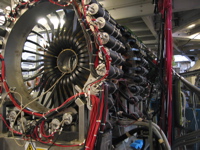What is a muon?
A muon is a spin-1/2 particle. A particle physicist would think of a positive muon as a lepton, a heavy anti-electron. That of course is what it really is.
- In fact, it is more helpful for us to think of a positive muon as a light proton.
- When implanted in a solid, the muon behaves as a microscopic magnetometer. This is because its spin can Larmor precess in the local magnetic field.
- Muons live only for 2.2 µs (on average!) - in an experiment, we detect their decay products and these tell us essentially which way each muon-spin was pointing at the moment of death.
µSR
...which stands for MUON SPIN ROTATION (or sometimes MUON SPIN RELAXATION). We perform this technique on a number of different types of organic materials, including:
- Magnetic oxides that host unusual excitations (e.g. monopoles)
- Inorganic fluorides (to study decoherence effects)
- Iron-based superconductors
- Organic superconductors
- Colossal magnetoresistive materials
- Molecular magnets
- ...and many other systems
µSR is not a diffraction technique. Muons are fired at the sample, and almost instantaneously implant at particular (typically interstitial) sites. They stay there until they die, although in some materials, at certain temperatures, muon diffusion is observed.
The µSR experiments are performed at the ISIS Pulsed Muon Facility at the Rutherford Appleton Laboratory (close to Oxford) and also at the Paul Scherrer Institute, near Zürich in Switzerland.
What does it tell us?
µSR gives direct information about local magnetic fields, making the technique very useful for studying magnetic materials and superconductors.
It can be especially useful because (a) it is a local probe of internal fields, (b) it can be used to follow an order parameter as a function of temperature, (c) it works very well at milli-Kelvin temperatures (the incident muons easily pass through the dilution refrigerator windows), (d) it provides information on antiferromagnets, spin-gap systems, spin glasses as well as on ferromagnets, (e) if there are a range of muon sites it can provide information about internal magnetic field distributions and (f) it provides information about magnetic fluctuations and spin dynamics, even above the magnetic transition temperature.

This occurs because muons also measure spin relaxation (the muon-spin can be influenced by dynamical fluctuations of the local magnetic field). Thus an initially spin-polarized muon beam can depolarize due to this fluctuating local field distribution.
µSR is very effective in studying the field distribution inside superconductors.
The technique can also be used to obtain dynamical information through the anisotropy of the electron-nuclear hyperfine interaction.
- Dynamical effects, if sufficiently rapid, lead to an averaging of this anisotropy. For example, if the rotation is fast about a single axis, the hyperfine interaction possesses axial symmetry; the fast tumbling processes that occur in liquids will, for normal viscosities, average the anisotropy to zero, leading to an isotropic hyperfine tensor.
- The nature of the dynamics (and hence the symmetry of the hyperfine tensor) determine the position and shape of the observed level-crossing resonances.
How can I find out more?
A useful article on µSR is S. J. Blundell, Contemp. Phys. 40, 175-192 (1999).
Just published: Muon Spectroscopy: An Introduction (edited by S. J. Blundell, R. De Renzi, T. Lancaster and F. L. Pratt, Oxford University Press 2021)
